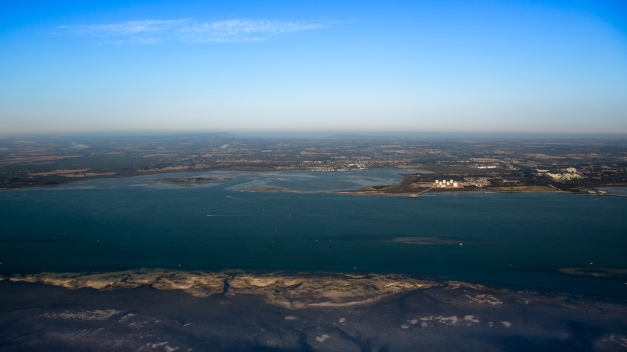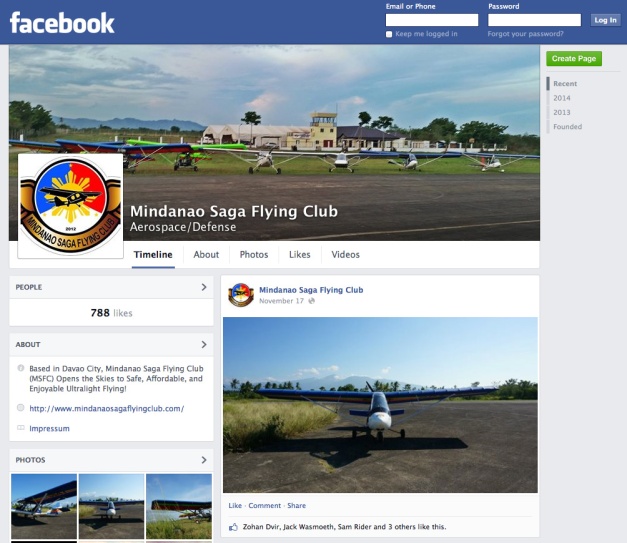 When taking photos from an aeroplane, if you want pin-sharp pictures suitable for magazines or blowing up to poster size or bigger, you have no choice but to shoot through an open window or door.
When taking photos from an aeroplane, if you want pin-sharp pictures suitable for magazines or blowing up to poster size or bigger, you have no choice but to shoot through an open window or door.
However, in many aircraft opening a door or window in flight is not permitted for safety reasons. You either have to remove the door before flight (very cold and draughty, specially in winter and/or at altitude) or live with the minor distortions of shooting through the perspex windows. Let’s face it, most photos we take from planes do not need to be ultra-sharp and capable of massive blow-ups, so shooting through the door transparency is probably not a major issue.
The doors on the Foxbat can be removed before (but not opened during) flight, so as a result, most people end up taking photos through the perspex which, in the main, is relatively distortion free. However, the real problem is not distortion but reflection – the doors on the Foxbat are convex and in bright weather are excellent reflectors of anything in the cabin. Light coloured shirts are a particular problem and bright yellow portable EPIRBs, light coloured caps and jeans have all been known to appear. It is these reflections which have rendered many of my potentially best photos unusable. Even flat windows can produce big, unwanted reflections.
Enter Mike Rudd and his Bunnings Aerospace plumbing grommet – technically a ‘dektite’ – for stopping photo reflections in Foxbat (or any other aeroplane) doors/windows. See picture above.
 The dektite comes in a range of shapes and designs but in essence is a bit like a big rubber conical sucker, with different diameter steps. The one in the picture on the left has a minimum diameter of about 25mm (roughly an inch to our imperial measure friends). Mike’s lens is 77mm in diameter, so he cut the rubber cone at that size and removed the square flaps. The cone is held on the lens with a (very hi-tech) plastic cable tie/zip tie.
The dektite comes in a range of shapes and designs but in essence is a bit like a big rubber conical sucker, with different diameter steps. The one in the picture on the left has a minimum diameter of about 25mm (roughly an inch to our imperial measure friends). Mike’s lens is 77mm in diameter, so he cut the rubber cone at that size and removed the square flaps. The cone is held on the lens with a (very hi-tech) plastic cable tie/zip tie.
When taking photos through the window, you just push the sucker up against the perspex and bingo! all reflections are eliminated. Being rubber, the cone is flexible, so you can move the camera around a fair bit to point in different directions without risking the reflections re-appearing.
 Click on this hi-res photo Mike took through the middle of a convex perspex door while using the dektite attached to his camera. The file is quite big – around 7Mb – so allow time for the download. The picture is a good example, contrasting the sky and dark colours of the bay, which could easily be swamped by reflections. The photo can be enlarged on screen, so you can see there are no reflections at all and any distortions due to the curved perspex are not intrusive.
Click on this hi-res photo Mike took through the middle of a convex perspex door while using the dektite attached to his camera. The file is quite big – around 7Mb – so allow time for the download. The picture is a good example, contrasting the sky and dark colours of the bay, which could easily be swamped by reflections. The photo can be enlarged on screen, so you can see there are no reflections at all and any distortions due to the curved perspex are not intrusive.
Dektites come in a very wide variety of materials, shapes and sizes and, of course prices – which range from about $15 up to several hundred dollars or more for specialist applications and large sizes. They are available (as they say) from all good quality hardware and plumbing stores.
Unfortunately the dektites FAQ page I found offered no advice on uses with a camera, so you’re on your own. Happy reflection-free photos!









